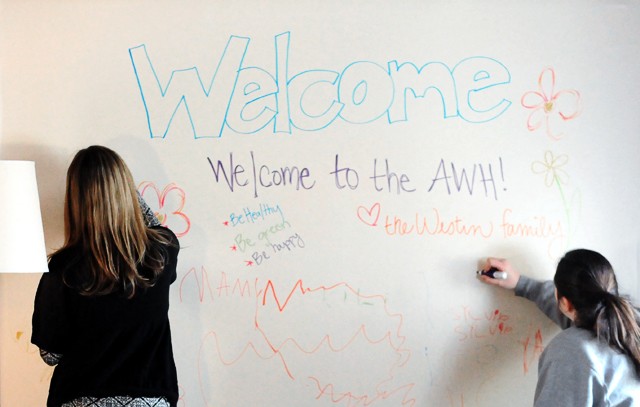When Jodie FlicekâÄôs 8-year eating disorder became too much to handle, she packed her bags and moved into the Anna Westin House in Chaska âÄî a place she would later call her second home. âÄúIt doesnâÄôt feel like a business where theyâÄôre making money,âÄù the 25-year-old Chanhassen resident said. âÄúIt really feels they have our best interest at heart and they want me to get better.âÄù The Emily Program, which offers comprehensive eating disorder treatment at six Minnesota locations, completed the almost yearlong process of moving the Anna Westin House âÄî its only residential treatment facility âÄî to the former St. Andrew Kim Catholic Church across the street from the University of MinnesotaâÄôs St. Paul campus. With 16 beds, the new facility has double the capacity of the former Chaska location âÄî a much-needed upgrade for the program, which has a 12-person waiting list, Jillian Croll, director of education, research and program development, said. âÄúWaiting lists make us sad,âÄù Croll said. âÄúWe want people to get treatment.âÄù On Monday, the eight residents from the Chaska location moved into the new one, where they will stay in two-person rooms. With more than 176,000 Minnesotans suffering from eating disorders, Lindsay Brown, director of business development, said sheâÄôs happy theyâÄôll be able to serve more people. âÄúWe feel thrilled that we have more resources, more beds to treat people,âÄù Brown said, âÄúbecause we know that people are struggling out there and in need of help.âÄù Scott Crow, psychiatry professor and psychiatrist at The Emily Program, said the new location will serve to strengthen the long-standing collaboration between the University and the program. Emily Program patients have participated in eating disorder studies at the University focusing on eating and its relationship to anxiety, costs associated with eating disorders and personality characteristics of people with eating disorders, Crow said. Despite the facilityâÄôs proximity to campus, itâÄôs unlikely to draw students for residential treatment, Crow said. âÄúItâÄôs not like being right next to campus will make it easy for people to do both, because the time youâÄôre in residential treatment is a time youâÄôre really focused on recovery,âÄù he said. The new facility could make a big difference for the many University students who currently receive counseling at the Como location in the event they need additional care, Croll said. âÄúBeing so close and connected allows them to transition back to school much more easily than if they had to interrupt their school career and fly off to, letâÄôs say, Arizona,âÄù she said. In 2007, 5.3 percent of students on the Twin Cities campus reported struggling with an eating disorder, according to a Boynton Health Service survey. Of those, 2.4 percent said they had been diagnosed with anorexia in their lifetime and 1.8 percent with bulimia. About 2,500 clients âÄî men and women ages 8 to early 70s âÄî use The Emily Program services at locations in Burnsville, Duluth, St. Louis Park, St. Paul and Stillwater. Stays at the Anna Westin House range from four to six months, although people can stay as long as they need, Croll said. Residents range from 15 to 50 years old, with the average age being 26, Croll said. While the Anna Westin House focuses mostly on inpatient treatment, it will also offer a limited amount of outpatient therapy. The other locations offer outpatient and day treatment. Orono residents voiced opposition to The Emily ProgramâÄôs plan to open an eight-bed residential treatment facility in the city, claiming it could bring down surrounding property values and that its residents could present a danger to society. The Orono City Council is likely to vote on the facility this week. About half of the staff at The Emily Program has had eating disorders themselves, Croll said. âÄúWe donâÄôt want the message to be âÄòyou have to have had an eating disorder in order to be a good therapist,âÄô âÄù she said. âÄúBut it certainly helps our agency have credibility with clients, because we know what weâÄôre talking about.âÄù For Flicek, talking to a therapist who has struggled with the same problems offers tremendous comfort. âÄúIt helps me to see these fabulous women who have their lives together and to hear them say that they used to struggle,âÄù she said. âÄúI think it gives them a lot of compassion, a lot more insight on how to help me.âÄù

Willings, left, and Fox write welcome messages Sunday on the common room white board to the eight new residents.
Emily Program now in St. Paul
The Emily Program, which offers comprehensive eating disorder treatment, moved across the street from the University of Minnesota St. Paul campus.
by Tara Bannow
Published March 7, 2010
0
More to Discover







